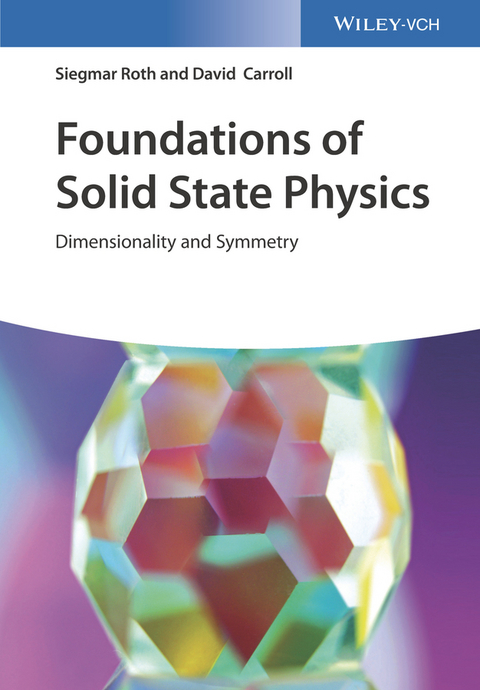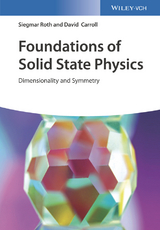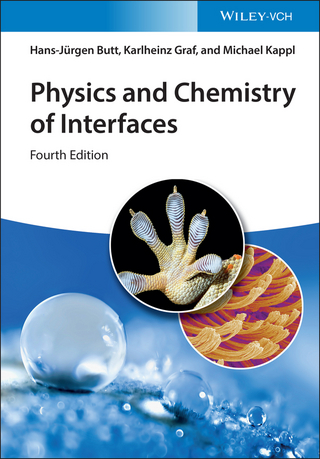Foundations of Solid State Physics
Foundations of Solid State Physics introduces the essential topics of solid state physics as taught globally with a focus on understanding the properties of solids from the viewpoint of dimensionality and symmetry. Written in a conversational manner and designed to be accessible, the book contains a minimal amount of mathematics. The authors - noted experts on the topic - offer an insightful review of the basic topics, such as the static and dynamic lattice in real space, the reciprocal lattice, electrons in solids, and transport in materials and devices.
The book also includes more advanced topics: the quasi-particle concept (phonons, solitons, polarons, excitons), strong electron-electron correlation, light-matter interactions, and spin systems. The authors' approach makes it possible to gain a clear understanding of conducting polymers, carbon nanotubes, nanowires, two-dimensional chalcogenides, perovskites and organic crystals in terms of their expressed dimension, topological connectedness, and quantum confinement.
This important guide:
-Offers an understanding of a variety of technology-relevant solid-state materials in terms of their dimension, topology and quantum confinement
-Contains end-of-chapter problems with different degrees of difficulty to enhance understanding
-Treats all classical topics of solid state physics courses - plus the physics of low-dimensional systems
Written for students in physics, material sciences, and chemistry, lecturers, and other academics, Foundations of Solid State Physics explores the basic and advanced topics of solid state physics with a unique focus on dimensionality and symmetry.
Siegmar Roth, PhD, is founding director of Sineurop Nanotech GmbH Stuttgart, Germany, a company synthesizing carbon nanotubes, graphene and related materials. He was leader of the Research Group on Synthetic Nanostructures at the Max Planck Institute for Solid State Research.
David L. Carroll, PhD, is professor at Wake Forest University. He was a fellow at the department of materials science and engineering at the University of Pennsylvania, Philadelphia, and later joined the Max-Planck-Institute for solid state research in Stuttgart, Germany.
Introduction
What is dimension? How do we determine this?
One-Dimensional Substances
The Static Lattice: Order and Symmetry
The Reciprocal Lattice and Reciprocal Space
The Dynamic Lattice
Electrons in Solids
Transport and the Device
Intermission and the Quasi-particle
Electron-Phonon Coupling and the Peierls Transition
Solitons, Polarons and Excitons: Molecular Electronics
Electron-Electron Correlation
Optical Interactions and the Dielectric Model
Spin, Spin Systems, and Magnets
Applications of Low-Dimensional Systems
Appendices
| Erscheinungsdatum | 17.04.2019 |
|---|---|
| Verlagsort | Weinheim |
| Sprache | englisch |
| Maße | 170 x 244 mm |
| Gewicht | 1286 g |
| Einbandart | gebunden |
| Themenwelt | Naturwissenschaften ► Physik / Astronomie ► Atom- / Kern- / Molekularphysik |
| Naturwissenschaften ► Physik / Astronomie ► Festkörperphysik | |
| Technik ► Maschinenbau | |
| Schlagworte | Chemie • Chemistry • Festkörperchemie • Festkörperphysik • Festkörperchemie • Festkörperphysik • Materialeigenschaften • Materials Science • Materialwissenschaften • Physics • Physik • properties of materials • solid state chemistry • Solid state physics |
| ISBN-10 | 3-527-34504-3 / 3527345043 |
| ISBN-13 | 978-3-527-34504-5 / 9783527345045 |
| Zustand | Neuware |
| Informationen gemäß Produktsicherheitsverordnung (GPSR) | |
| Haben Sie eine Frage zum Produkt? |
aus dem Bereich





